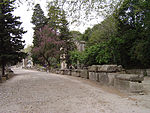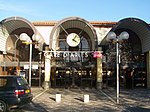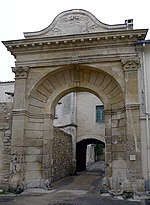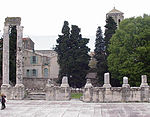Communauté d'agglomération Arles-Crau-Camargue-Montagnette
Agglomeration communities in FranceBouches-du-Rhône geography stubsIntercommunalities of Bouches-du-Rhône

The Communauté d'agglomération Arles-Crau-Camargue-Montagnette (CCAM) is the communauté d'agglomération, an intercommunal structure, centred on the city of Arles. It is located in the Bouches-du-Rhône department, in the Provence-Alpes-Côte d'Azur region, southeastern France. It was created in December 2003. Its area is 1445.8 km2. Its population was 83,669 in 2018, of which 51,031 in Arles proper.
Excerpt from the Wikipedia article Communauté d'agglomération Arles-Crau-Camargue-Montagnette (License: CC BY-SA 3.0, Authors, Images).Communauté d'agglomération Arles-Crau-Camargue-Montagnette
Arles
Geographical coordinates (GPS) Address Nearby Places Show on map
Geographical coordinates (GPS)
| Latitude | Longitude |
|---|---|
| N 43.683333333333 ° | E 4.65 ° |
Address
13200 Arles
Provence-Alpes-Côte d'Azur, France
Open on Google Maps










